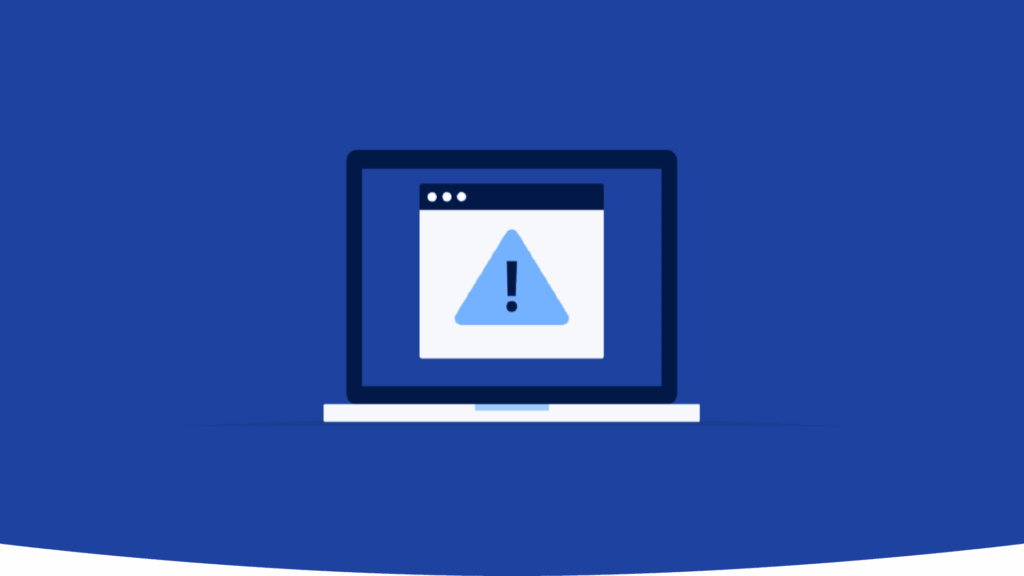Friction Score: Instantly Detect & Quantify UX Friction
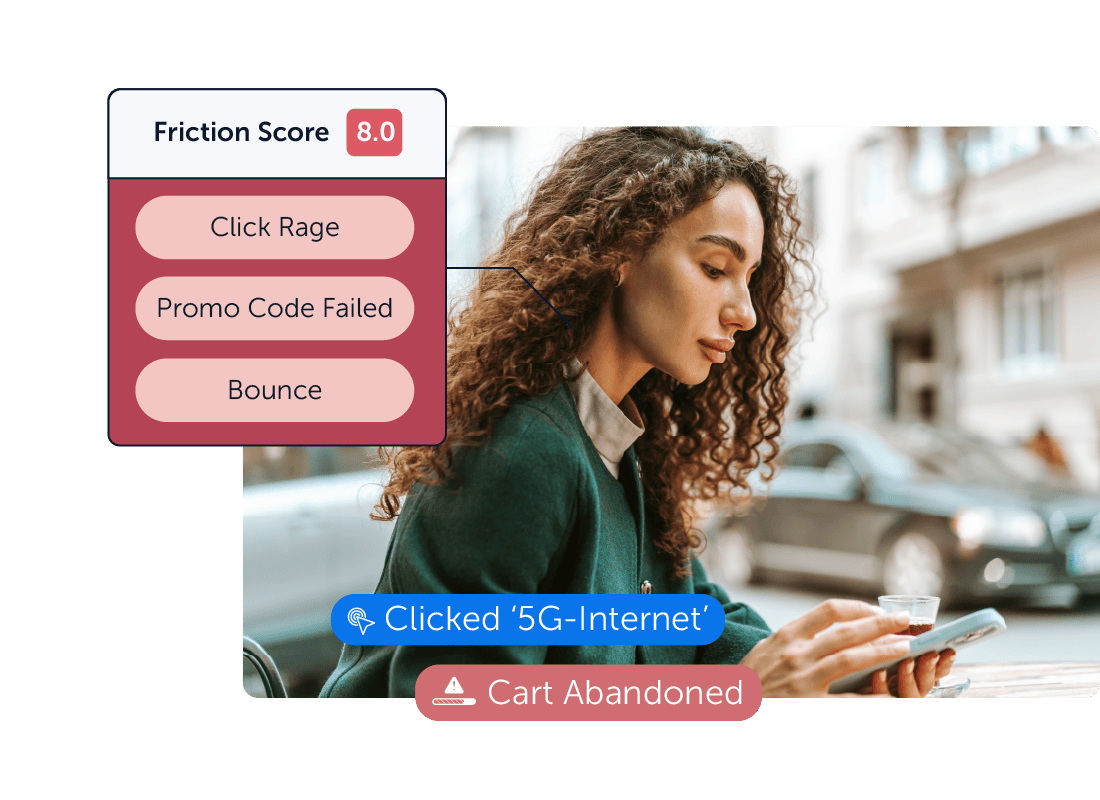
Spot user frustration & fix it fast
Click-error, dead clicks, and bounces are conversion killers. Friction Score detects user frustration instantly, so you can eliminate misleading design, broken and confusing elements before they drive visitors away.
Prioritize fixes that impact conversions
Know exactly which pages cause frustration, so you can focus on the fixes that matter most—reducing drop-offs, increasing engagement, and recovering lost revenue.
Automate friction detection—No setup required
Mouseflow’s proprietary Friction Score automatically tracks +7 friction events in every session, highlighting high-friction user experiences in real time—without any manual setup.
Save time & money by prioritizing critical UX issues
With Friction Insights, you gain access to the Friction Dashboard and Friction Map, giving your team real-time website experience analysis to detect and fix website friction efficiently. Identify user frustration hotspots and focus on the pages, elements, and errors that impact conversions the most.
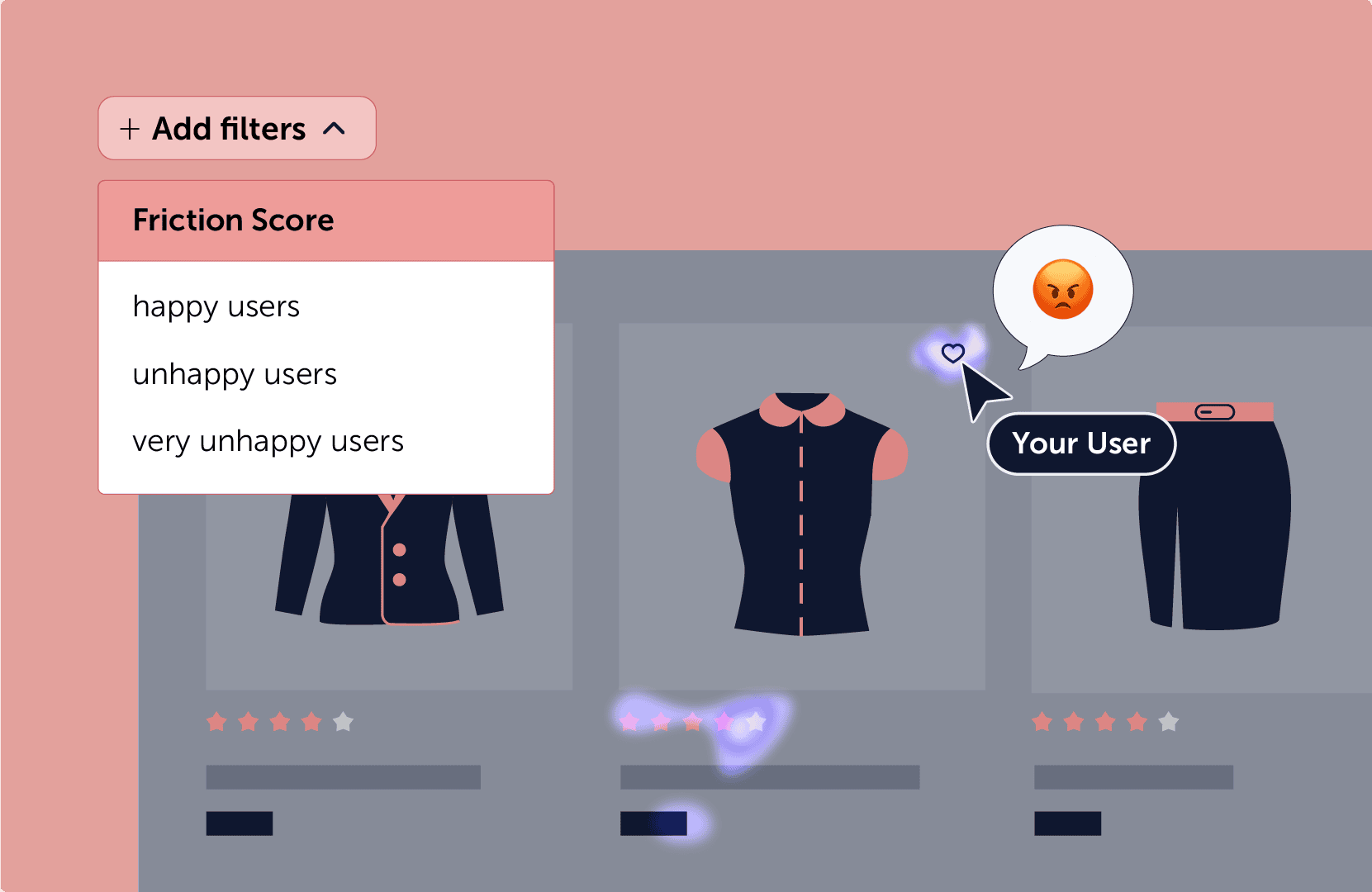
Automatically rank your website's sessions
Time, like money, should be spent wisely. Friction Score helps you prioritize optimizations with real, actionable data.
Mouseflow’s proprietary Friction Score measures user frustration and the level of satisfaction of your website visitor by analyzing +7 friction events like click-rage, dead clicks and bounces—giving you immediate insights into your website’s user experience so you can turn user frustration into revenue-driving opportunities.
No extra configuration needed.
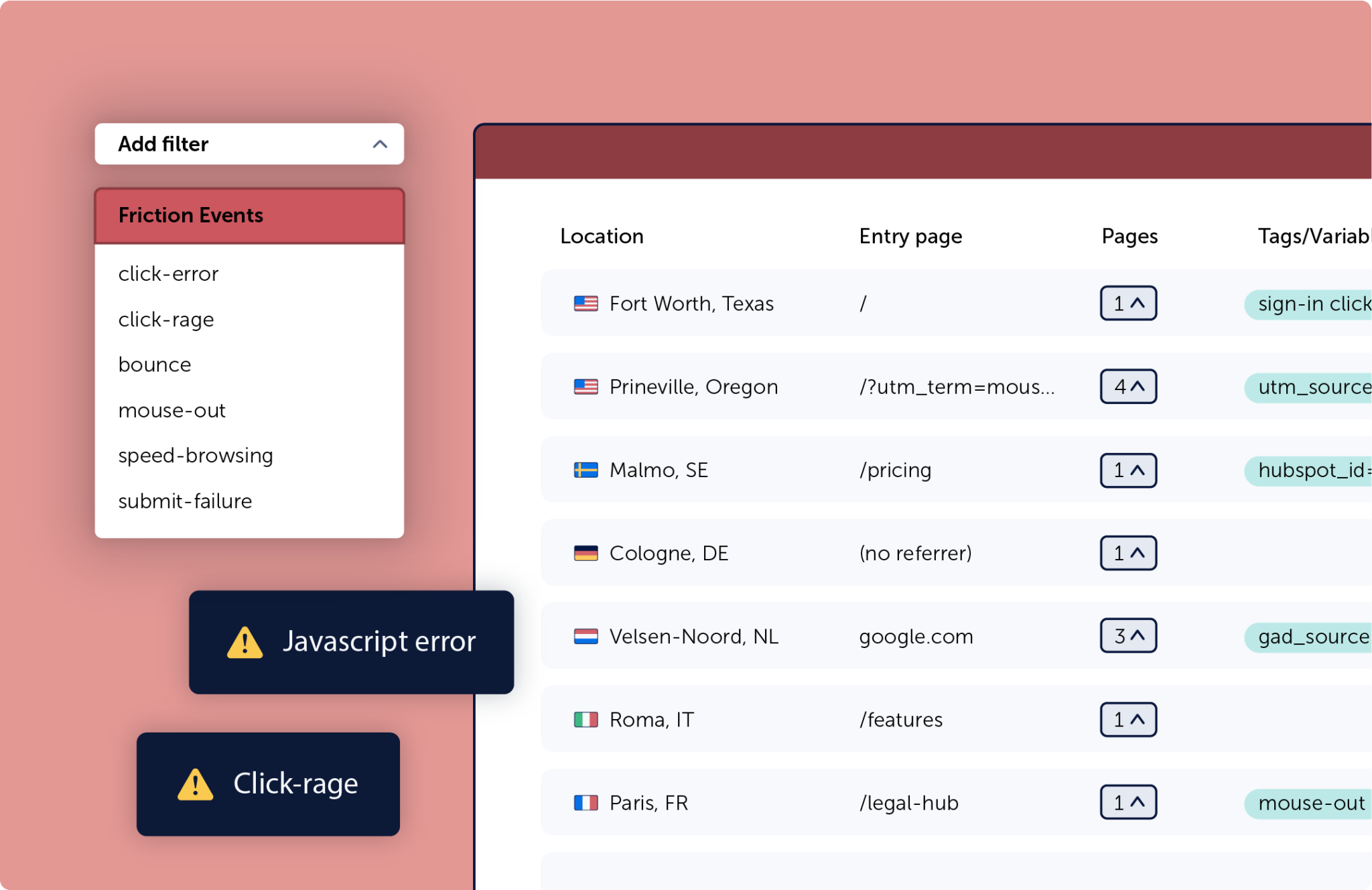
Leverage Friction Score and events across all features
- Uncover behavior patterns from frustrated users through session replay and heatmaps.
- Understand how website friction impacts revenue with conversion funnels and form analytics.
- Improve website experience by triggering feedback surveys when users experience click-rage, capturing direct insights.
- Recover lost conversions by detecting and fixing submission errors before they drive users away.

How Teams Use Mouseflow Friction Detection
For Marketing Teams
Uncover where campaigns underperform due to poor UX and prioritize fixes that keep your funnel smooth and conversion rates high.

For eCommerce Teams
Identify and remove checkout-blocking frustrations that cost you sales – before your customers bounce.

For UX & Design Teams
Get instant clarity on which user interactions feel clunky or confusing, so you can design with confidence and back it up with data.

For Product Teams
Pinpoint where users struggle with key features and drive improvements that reduce churn and boost engagement.
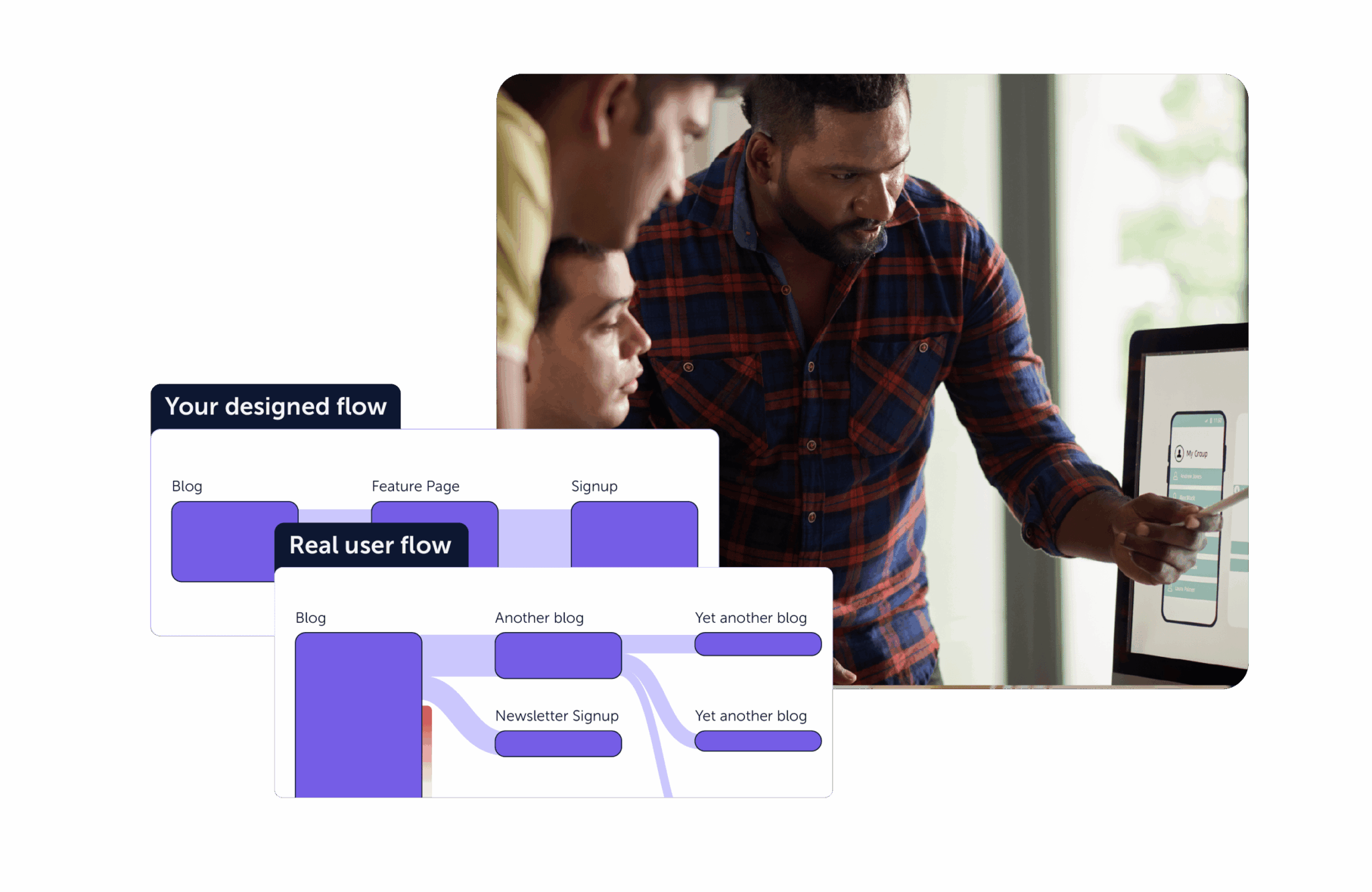
For CRO Teams
Stop guessing – prioritize high-impact tests by spotting friction hotspots that hurt conversions the most.

Let your users' struggles become your ultimate weapon
Get your Friction Score nowFrequently asked questions
More questions? We have answers.
Mouseflow’s Friction Score is a proprietary value that quantifies the user’s level of frustration from their website experience. It is calculated based on the occurrence of the following friction events in relation to your website’s overall experience:
- Click-errors (e.g., JavaScript errors, 404 pages)
- Click-rage (repeated clicks on a non-functional element)
- Bounce (users leaving before taking meaningful action)
- Mouse-out (cursor leaving the tab)
- Speed-browsing (rapid scrolling, skipping content)
- Custom-friction events
You can find out more about different friction events in this article.
The higher the Friction Score, the more frustration the user experienced during their session. By leveraging website experience analysis, you can pinpoint where users struggle and fix critical UX issues before they impact conversions.
The average Friction Score is different depending on the type of website. You can learn the industry average Friction Score for your website type with Mouseflow.
Simply add a trend view tile on your dashboard, and on the bottom right corner you will see the Industry Avg. Friction Score for your website type. Hover over it to see how your website compares.
Knowing where you stand can help you determine if your website experience is optimized or if users are encountering too much friction.
Mouseflow highlights Friction Score for each of the recorded sessions and individual pages on your website. You can find the respective scores
- In the Friction column in the Recordings list
- In the Heatmaps list, where high-friction pages are color-coded (red or yellow)
If an ‘Unhappy’ smiley appears next to a session, or if a heatmap page has a high friction score, it means urgent UX issues are impacting your website experience and need to be addressed.
Friction events directly impact the user’s experience and conversion performance.
- Click-rage happens when users repeatedly click an unresponsive element, leading to frustration and drop-offs. Fixing misleading CTAs or broken buttons prevents friction and increases engagement.
- Dead clicks signal that an element appears interactive but isn’t. When users think they can click but nothing happens, it disrupts their journey. Making these elements actionable or adjusting UI clarity improves navigation and reduces frustration.
- High bounce rates often mean users aren’t finding what they expect. Identifying why visitors leave and optimizing content clarity, page speed, and interactivity keeps them engaged and drives conversions.
Example: An eCommerce store using Friction Score discovered that 20% of users rage-clicked on a non-clickable product image. After making images zoomable and clickable, they saw a 12% increase in conversions and an 18% drop in bounce rate.
Friction Score helps you eliminate these conversion blockers, turning frustration into higher retention and revenue.
Friction Score is designed to help you identify and resolve UX issues that impact conversions. Here’s how to use it effectively:
- Filter recordings and heatmaps by Friction Score to prioritize sessions where users struggled the most.
- Pinpoint frustration hotspots with session replays and heatmaps.
- Analyze conversion funnels to see where users drop off due to friction.
- Trigger feedback surveys to capture insights from users who experience high friction.
- Optimize based on insights, making data-driven UX improvements that directly increase engagement and conversions.
Check out the help center to find out more about leveraging Mouseflow’s Friction Scores in recordings and in heatmaps.
The optimizations that would make sense for your particular website should be determined based on the exact element or exact friction events that the user experiences.
However, there are several best practices that you can follow to reduce website friction and improve the overall user experience.
- Make sure the website structure is clean, and the user can easily navigate between relevant pages.
- Make sure the user gets the feedback they expect from interacting with different elements on the website. Say, if multiple users try to click an element, likely they expect it to be clickable, so it’s good to make sure it in fact is.
- Provide relevant information on the pages of your website, so that the user gets everything they want from your website.
- Revisit your website’s Friction Score on a regular basis to make sure you’re providing a great digital experience for your users.
You can find out more about the website navigation best practices that reduce website friction on our blog.
Eliminating website friction points and thus reducing the frustration can help you create a better user experience for your users. A better user experience means that it’s easier for the users to achieve their goals on your website.
If your goals are aligned with the users’ goals, improving the website Friction Score helps you drive conversions to signups, demos, cart completions, etc.
Different behavior analytics tools use different names for the score they calculate based on the various website friction or user frustration events that get recorded during a session. The way the score is calculated also varies, so the numbers from different tools cannot be directly compared. Different scores take different events into account. Mouseflow uses its proprietary technology to calculate Friction Score.
Friction Score, digital experience score, frustration score – or whatever the other names for it are – is a value that gives you an idea about how smooth the user’s experience is while browsing your website.
Filtering out recordings or heatmaps with high friction or low can highlight the pages or elements where the users have the most issues, and where their frustration level was quite high.
Mouseflow’s Friction Score is based on a variety of friction events, taking into account not only click-rage and scroll patterns, but also events such as mouse-out, speed-browsing, and JavaScript error tracking that are not considered in some other scores. This makes Mouseflow’s Friction Score a comprehensive solution to understand visitors’ behavior and the problems they face.
What really makes Mouseflow’s Friction Score stand out is that you can set up custom friction events that are most relevant to your particular website, be it facing a 404 page, custom JavaScript errors, or something else. Customizing friction events is unique to Mouseflow, and it allows you to get exactly the data you want from your users’ website interactions.
No, Mouseflow users can only see the level of Friction Score for the sites they’ve added to Mouseflow, and the industry average Friction Score for the respective type of websites. It is not possible to see your competitor’s Friction Score, and it’s just as well not possible for them to see yours.
Some other tools offer their own scoring for website friction events, be it customer frustration score, struggle score. Mouseflow is one of the best.
Mouseflow’s recent accolades include:
G2 (Spring 2024): Leader, Momentum Leader, Fastest Implementation, Most Implementable, Best Usability, Best Results, and Best Relationship.
Capterra Shortlist for Web Analytics Software 2024
GetApp 2024: Category Leader in Web Analytics, Heatmaps, and Website Optimization Tools
Mouseflow’s recent accolades include:
G2 (Spring 2024): Leader, Momentum Leader, Fastest Implementation, Most Implementable, Best Usability, Best Results, and Best Relationship.
Capterra Shortlist for Web Analytics Software 2024
GetApp 2024: Category Leader in Web Analytics, Heatmaps, and Website Optimization Tools
But you should decide for yourself — check out real user reviews on GetApp, G2, and Capterra and look at similar tools side-by-side with our handy comparisons to tools like Hotjar, CrazyEgg, FullStory, Contentsquare, VWO, lucky Orange, and more.
